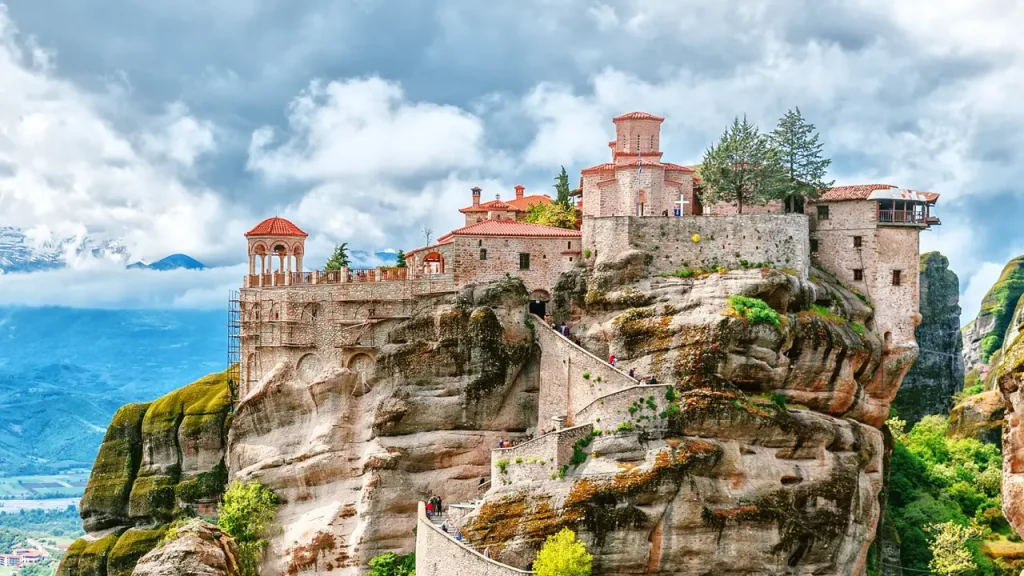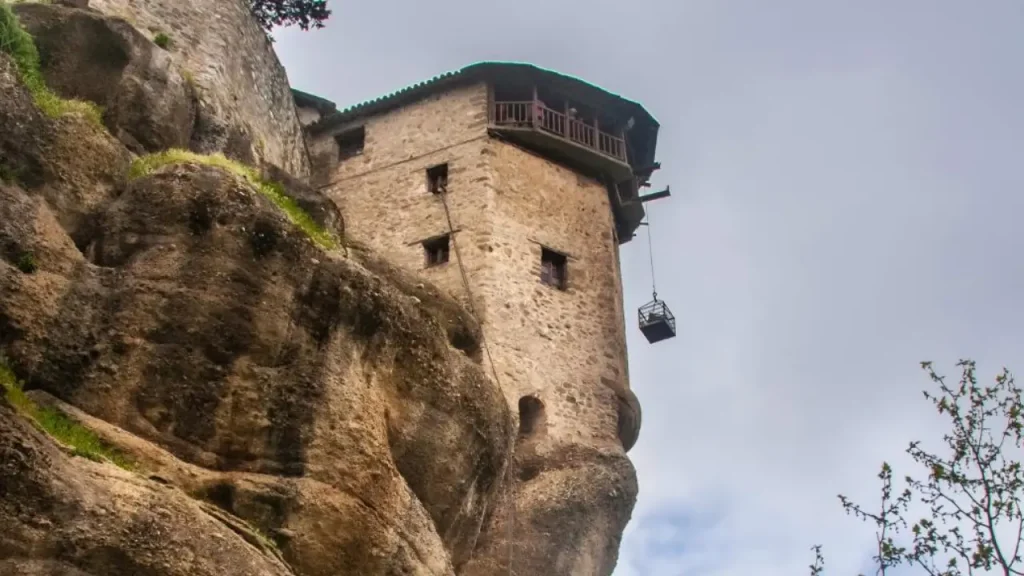Monks in Kalambaka Soaring Home in the Skies
The mystical allure of Meteora, a UNESCO World Heritage Site in central Greece, captivates visitors with its monastic complex perched atop colossal rock formations. The question that piques curiosity is not only how the monasteries came to be on these giant rocks but also, intriguingly, how the monks navigate this ethereal landscape.

What Is Meteora?
Meteora, a geological wonder, translates to “suspended in the air” or “in the heavens above.” This otherworldly destination boasts a collection of monasteries precariously balanced on immense rock pillars. The site’s uniqueness lies in its geological history, as these colossal rocks emerged millions of years ago.
The Origins of Meteora Monasteries
Tracing the roots of the Meteora monasteries unveils an ancient tale. The rock formations, formed by a combination of geological and weathering processes, created a natural fortress. Monastic life found its way to Meteora in the 14th century when monks sought refuge from political turmoil.
How Monks Get Home by Air?
Faced with a sense of trepidation, Greek monks strategically erected the Meteora monasteries in Kalambaka, perched precariously atop towering cliffs. Remarkably, some of these monastic sanctuaries were so inaccessible that monks had to devise unconventional means for ingress and egress. Their ingenious solutions involved either sitting in a basket suspended on a rope or utilizing wooden ladders that could be pulled up in times of peril.
One such lifting system, depicted in a detailed image, offers a glimpse into the monks’ resourcefulness. While the contraption appears somewhat modern, possibly enhanced with a motor in contemporary times, its historical roots add a layer of fascination to the narrative.

The Enchanting Meteora Monasteries
Join us in exploring the enchanting list of monasteries that grace this ethereal landscape, each with its own unique history, architectural splendor, and panoramic views that transport you to a realm suspended between earth and sky.
The Monastery of Great Meteoron
The Monastery of Great Meteoron, perched atop towering rock pillars in Meteora, Greece, is a marvel of Byzantine architecture and spirituality. Founded in the 14th century, it stands as the largest and oldest of the Meteora monasteries, offering breathtaking views of the surrounding landscape.
The Monastery of Varlaam
The Monastery of Varlaam is a magnificent religious site perched atop a towering rock formation in Meteora, Greece. Renowned for its remarkable construction, it was built in the 16th century and is accessible by a network of staircases and bridges.
The Monastery of Roussanou
The Monastery of Roussanou is a stunning cliffside sanctuary located in Meteora, Greece, known for its breathtaking panoramic views. Perched atop a towering rock pillar, this medieval Eastern Orthodox monastery is accessible by a narrow bridge, adding to its unique charm.
The Monastery of St. Nicholas Anapafsas
Dating back to the 14th century, this secluded monastery offers breathtaking panoramic views of the surrounding landscape. Visitors are captivated not only by its historical significance but also by the spiritual serenity that envelops this sacred site.
The Monastery of St. Stephen
Surrounded by breathtaking landscapes, the monastery stands as a serene retreat, inviting visitors to explore its hallowed halls and connect with the rich cultural heritage it embodies.
The Monastery of Holy Trinity
Its strategic location offers panoramic views of the surrounding landscape, creating a serene and spiritually uplifting atmosphere. Dating back to the 15th century, the monastery stands as a testament to both religious devotion and the ingenuity of medieval construction.
FAQ
How To Get To Meteora Greece From Athens?
To reach Meteora from Athens, take a 4-5 hour scenic train or bus ride to Kalambaka. From there, explore the iconic monasteries using local taxis or buses. Consider guided tours for a richer experience. Plan your return journey with available train or bus options.
How To Dress for Meteora?
Dress for Meteora with consideration for its variable weather. In summer, opt for lightweight, breathable clothing, sun protection, and comfortable footwear. In spring and autumn, layering is key. When visiting the monasteries, choose modest attire, avoiding shorts and sleeveless tops.
Conclusion:
As you stand amidst the towering rocks of Meteora, gazing at the monasteries that seem to touch the heavens, the realization dawns that the journey to these celestial abodes is as extraordinary as the destination itself.
The monks of Kalambaka, with their ingenious use of zip lines, soar through the air, connecting with their secluded homes in a way that adds an exhilarating dimension to the spiritual tapestry of Meteora.